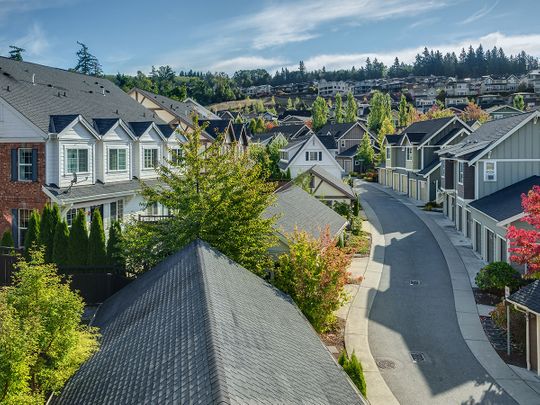
During the pandemic, I’ve often thought how lucky I am to live where I do: in a small Canadian lakeside town, with plenty of space to practice social distancing, far from heavily stricken centers. Even before the pandemic, I greatly appreciated this quaint spot tucked in an awe-inspiring landscape, which I’ve called home for a decade. I was surprised whenever I heard fellow residents complain how much they hated the place and wanted to escape. Was it the town? Or was it them?
A recent meta-analysis of many studies about neighbourhood satisfaction suggests it’s mostly the latter.
Excellent schools, reliable, well-kept homes with high curb appeal: These are the kinds of things that truly satisfy residents, right?
A study of nearly 1,900 adults who participated in a 2015 Los Angeles survey found that home ownership makes residents more sensitive to the desirability of local features. Or it could be because of residents’ perceptions of the neighbourhood. If a resident thinks a school is good, even if it isn’t, they’ll be happier.
Touches of nature affect mental health. A study out of Spain looked at blue spaces: those near oceans, lakes, rivers or even fountains. Compared with walking on a city street or resting at home, a short walk along a beach improved well-being and mood among the 59 participants.
From 2011 to 2014, a study in Philadelphia involved converting hundreds of vacant lots into green spaces. The researchers then surveyed 342 city residents. The result: On average, residents who lived near these green spaces felt significantly less depressed than before the improvements, which wasn’t true for those who lived near still-vacant lots.
An interesting side note was that “this happened even when residents were unaware of the actual change,” says Aaron Reuben, a clinical psychology doctoral candidate at Duke University who wasn’t involved in the study. Perhaps the greenery “can buffer other things that might be causing you stress: things like heat, noise and air pollution,” he says. Or neighbours who use the new parks are in better moods, which reflect onto you.
Overall, Reuben says that if city planners “change the underlying aspects of the neighbourhood, your sense of self and your happiness could change, too.”
The pandemic is also probably swaying how we feel about where we live. Our awareness of what our neighbourhood has or doesn’t have becomes a lot more acute when we’re stuck in it.
I could imagine, on one hand, spending more time in our neighbourhoods might lead us to come to appreciate them a little more, see things that we like about them that we didn’t realise were there. But we could also see a reverse effect, a sort-of ‘familiarity breeds contempt.’ We’re stuck in our neighbourhoods. Surely the grass is greener elsewhere. Reuben agrees that residents’ attitudes could go either way. “It could be that they get tired of seeing the same dilapidated structure that no one’s cleaned up. It could be that they see new things in the environment that bring them whimsy and wonder.”
He finds that chats with neighbours are becoming increasingly important, as are the places, such as parks, that give us these opportunities. Particularly in covid times, I wouldn’t underestimate the influence of social interactions that can happen in outdoor spaces.
If you’re not satisfied with your neighbourhood — now or pre-pandemic — how do you turn the dial?
We might sometimes imagine a group of dissatisfied residents getting together and, say, cleaning up the park. And if that improves their perception of the park, then it might have an impact on satisfaction. However, research suggests that it would have more to do with their personal experience than with the neighbourhood itself.
Becoming a steward of the neighbourhood, individually or with others is important. By being engaged and active in the community, you’re going to feel better. As a bonus, you’re also making the neighbourhood space better. That’s going to make other people feel better.
Galadriel Watson is a writer in British Columbia. She has written over 20 books and magazine articles for kids








